.
Vire will wind in other shadows
unborn through the bright ways tremble
and the old mind ghost-forsaken
sink into its havoc
Samuel Beckett (1906-1989): Saint-Lô, 1946, from The Collected Poems 1930-1978, 1984

Ruins of St. Lô, Normandy [with river Vire in foreground]: photo by US Army Signal Corps, July, 1944 (US National Archives)
.
When we got there, there was nothing at all. The whole of Saint-Lô was blotted out. Nothing was standing except a few shacks that had been temporarily put up, and in one of these wooden shacks was the local hospital, a room of about twenty feet by twelve. One nurse kept explaining how it happened, the planes coming around and around, bombing Saint-Lô from a very considerable height. They were American planes.
.
[T]he whole enterprise [i.e. of collaboration between townspeople of the devastated "Capital of the Ruins" and the visiting Irish Red Cross aid party, in building a hospital] turned from the beginning on the establishing of a relation in the light of which the therapeutic relation faded to the merest of pretexts. [...] I suspect that our pains were those inherent in the simple and necessary and yet so unattainable proposition that their way of being we, was not our way and that our way of being they, was not their way. It is only fair to say that many of us had never been abroad before.
.
Saint-Lô was bombed out of existence in one night. German prisoners of war and casual labourers attracted by the relative food-plenty, but soon discouraged by housing conditions, continue, two years after the liberation, to clear away the debris, literally by hand.
Samuel Beckett (1906-1989): excerpts from The Capital of the Ruins, unproduced radio play for Radio Erin, c. 1946, in The Complete Short Prose, 1929-1989 (1995)
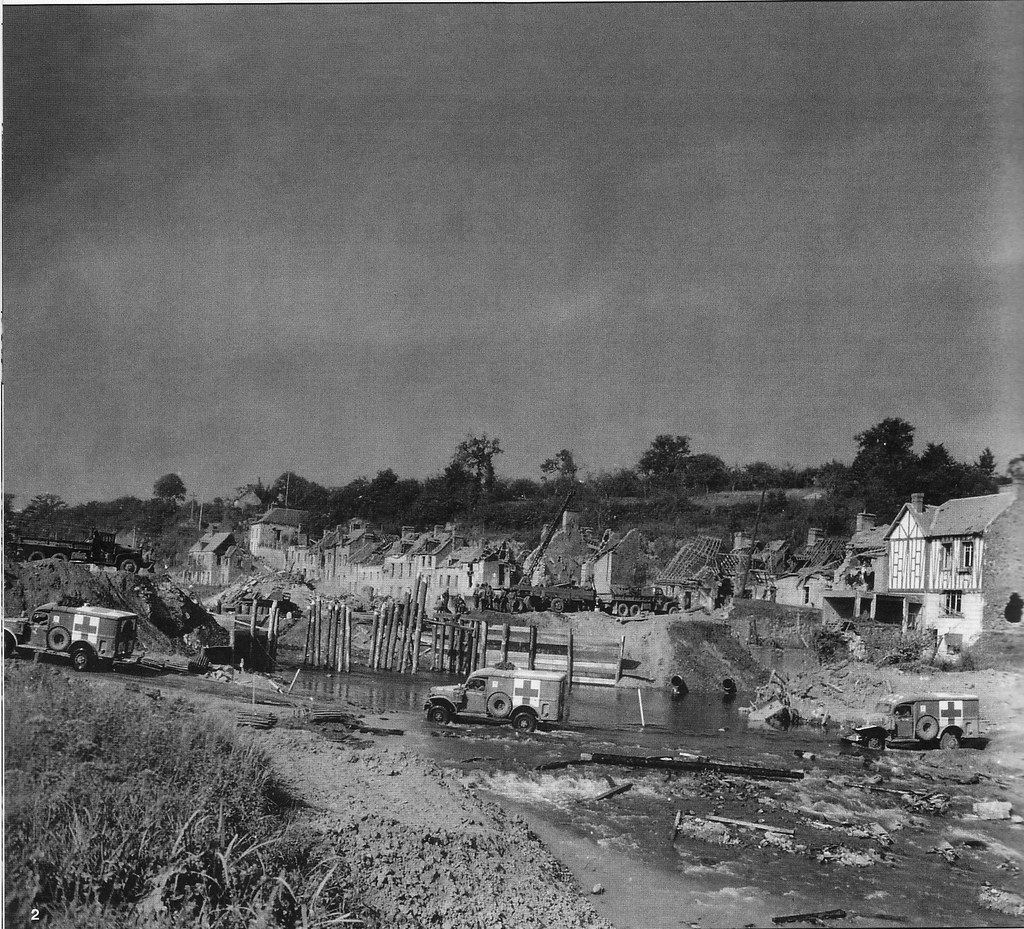
US Army ambulances ford the river Vire in Normandy as Army engineers
build a pile
driven bridge to replace the old stone bridge at Pont Hébert, destroyed
by Allied bombing: photo by US Army, July 1944; image by Michel Le
Querrec, 3 April 2009
Saint-Lô, Normandy, on the River Vire, destroyed by Allied bombing: photo by US Army, July 1944 (US National Archives)

US Army soldier in the ruins of Saint-Lô, Normandy on the River Vire, destroyed by Allied bombing: photo by US Army, July 1944 (US National Archives)

US soldiers watching Allied bombardment, Saint-Lô: photo by US Army Signal Corps, June 1944; image by W. Wolny, 29 January 2006 (Archivesnormandie 1939-45)
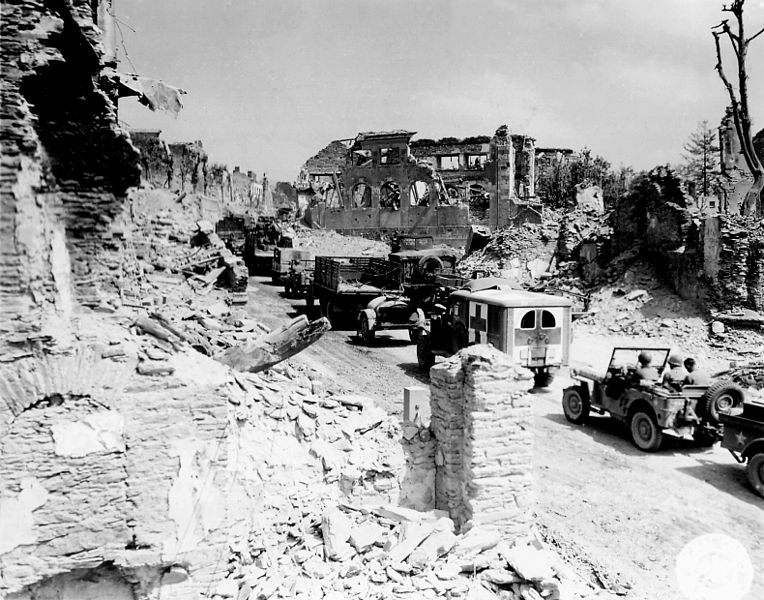
American military convoy through Saint-Lô: photo by US Army Signal Corps, June 1944; image by W. Wolny, 27 January 2006 (Archivesnormandie 1939-45)

Railway station and town of of Saint-Lô, Normandy, destroyed summer 1944: photo by US Army Signal Corps, July 1944 (Conseil Régional de Basse-Normandie / US National Archives)
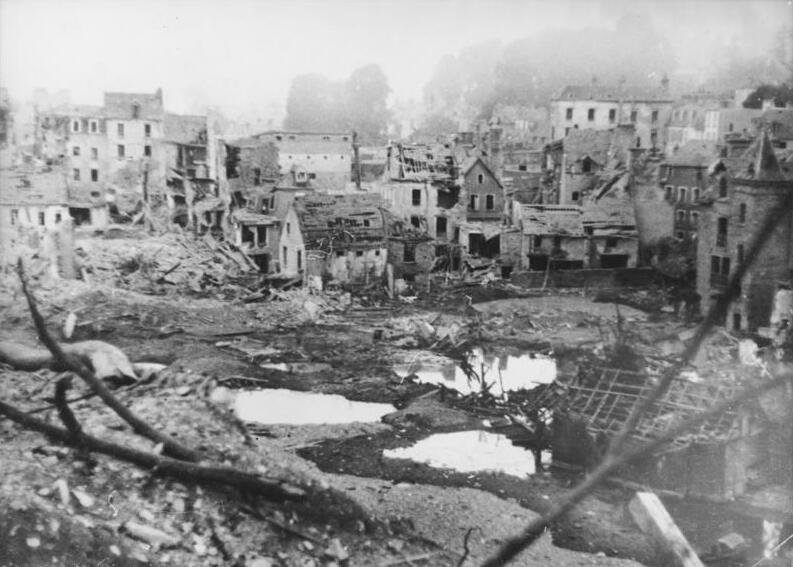
France, St. Lô, destruction. A severely damaged neighborhood in St. Lô: photographer unknown, June-July 1944 (Deutsches Bundesarchiv)
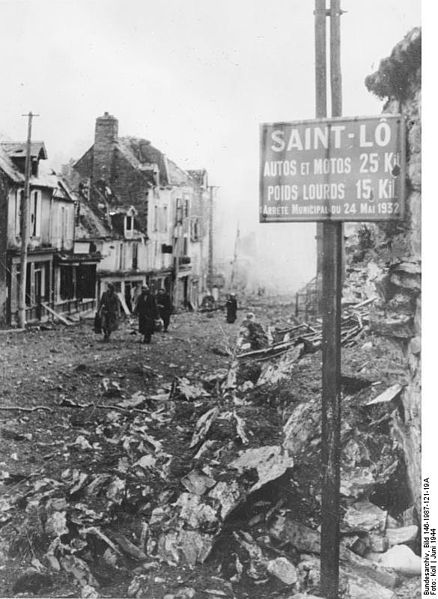
Normandy invasion front. Refugees from Anglo-American bombing of the stricken town of Saint-Lô carrying their belongings: photo by PK-Koll/Transocean-
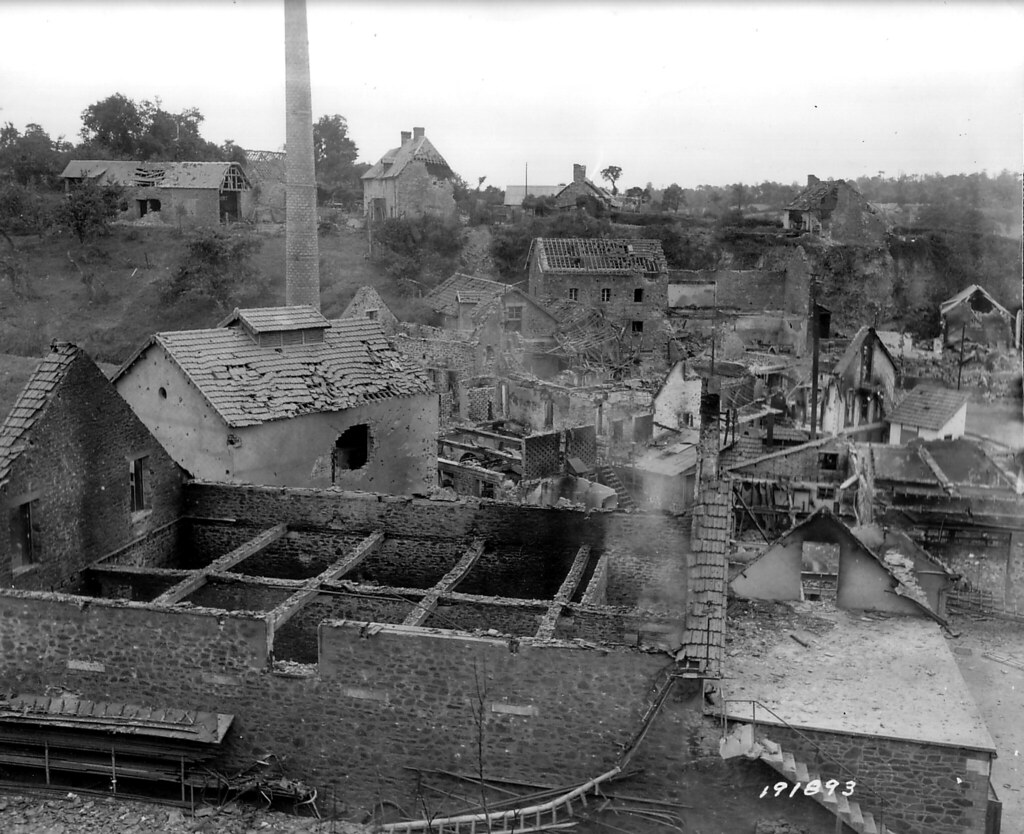
Ruins of the Henri Claudel dairy plant, Pont-Hébert, on the left bank of the river Vire, Saint-Lô, Normandy: photo by US Army Signal Corps, July 1944; image by Photos Normandie, 1 April 2007
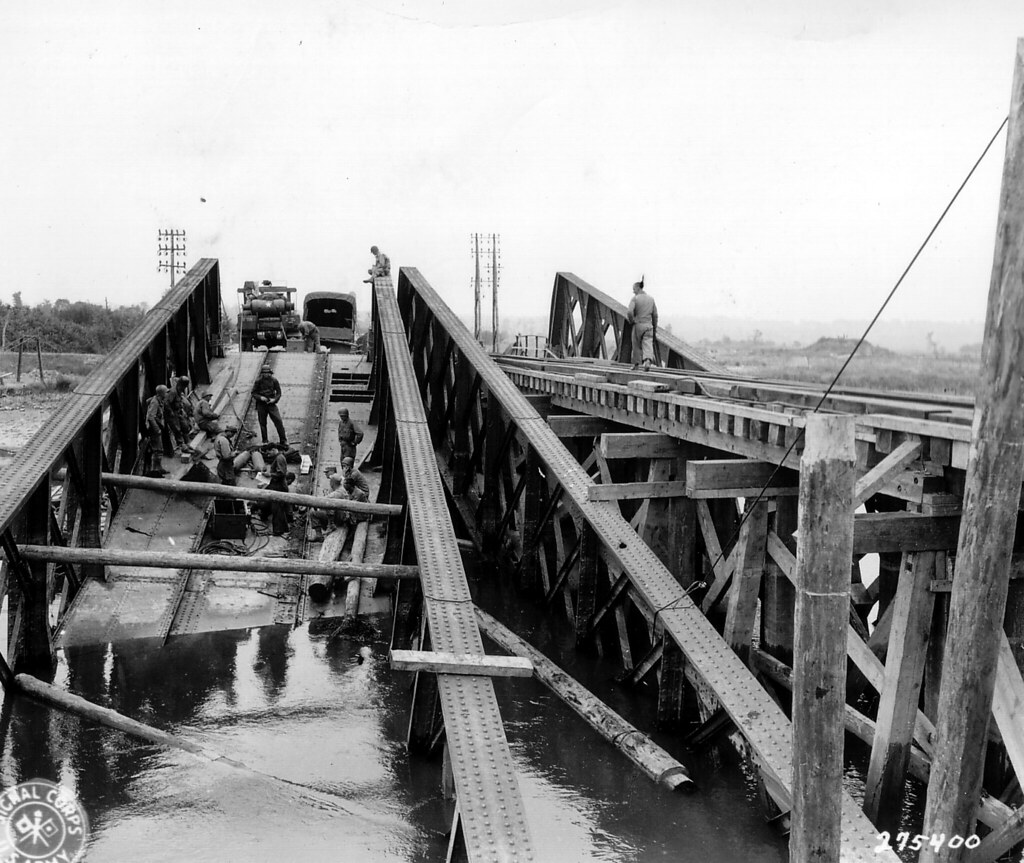
A double metal railway bridge crossing the river Vire river collapsed into the water: German sabotage or Allied bombing?: photo by US Army Signal Corps, July 1944; image by Photos Normandie, 1 April 2007
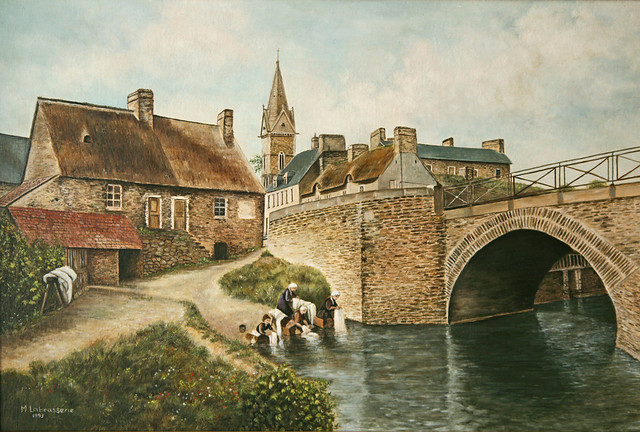
Pont-Hébert, the old bridge. This neighborhood was destroyed by Allied aerial bombardment in 1944: postcard, photographer unknown, dated 1904; image by
souricette88, 25 November 2008
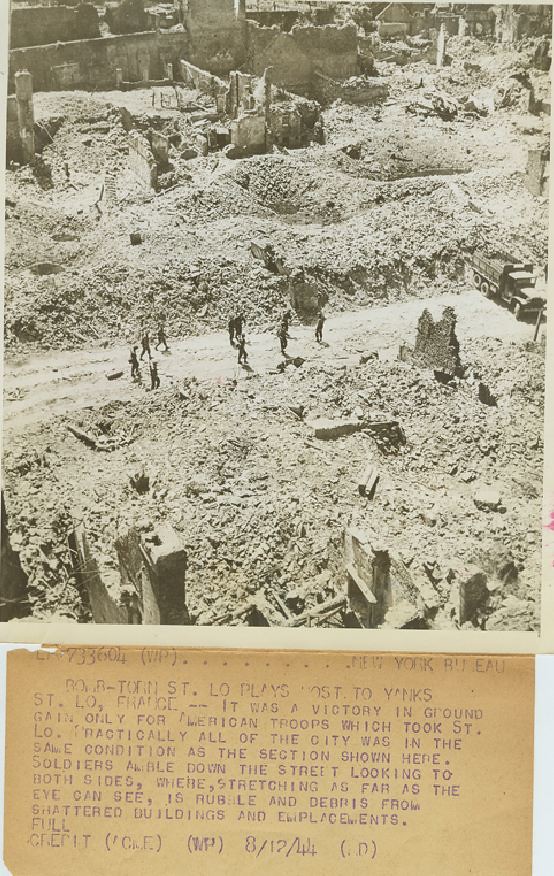
Bomb-Torn St. Lo Plays Host to Yanks. It was a victory in ground gain only for American troops which took St. Lo. Practically all of the city was in the same condition as the section shown here. Soldiers amble down the street looking to both sides, where, stretching as far as the eye can see, is rubble and debris from shattered buildings and emplacements: photo by Acme/WP, 12 August 1944; image by Michel Le Querrec, 15 February 2012 (The Allison Collection of World War II Photographs)
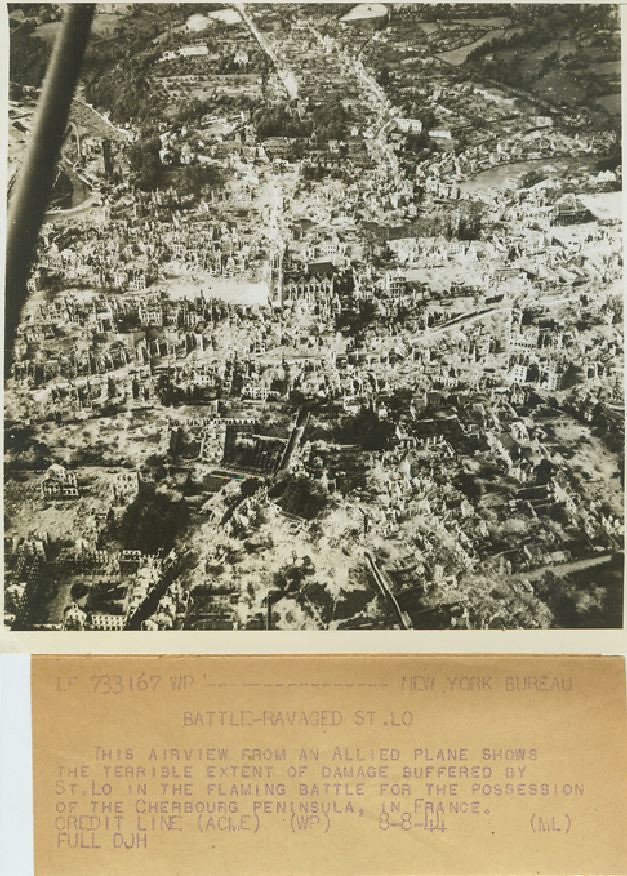
Battle-Ravaged St. Lo. Airview from an Allied plane showing the terrible extent of damage suffered by St. Lo in the flaming battle for the possession of the Cherbourg peninsula in France: photo by Acme/WP, 8 August 1944; image by Michel Le Querrec, 15 February 2012 (The Allison Collection of World War II Photographs)
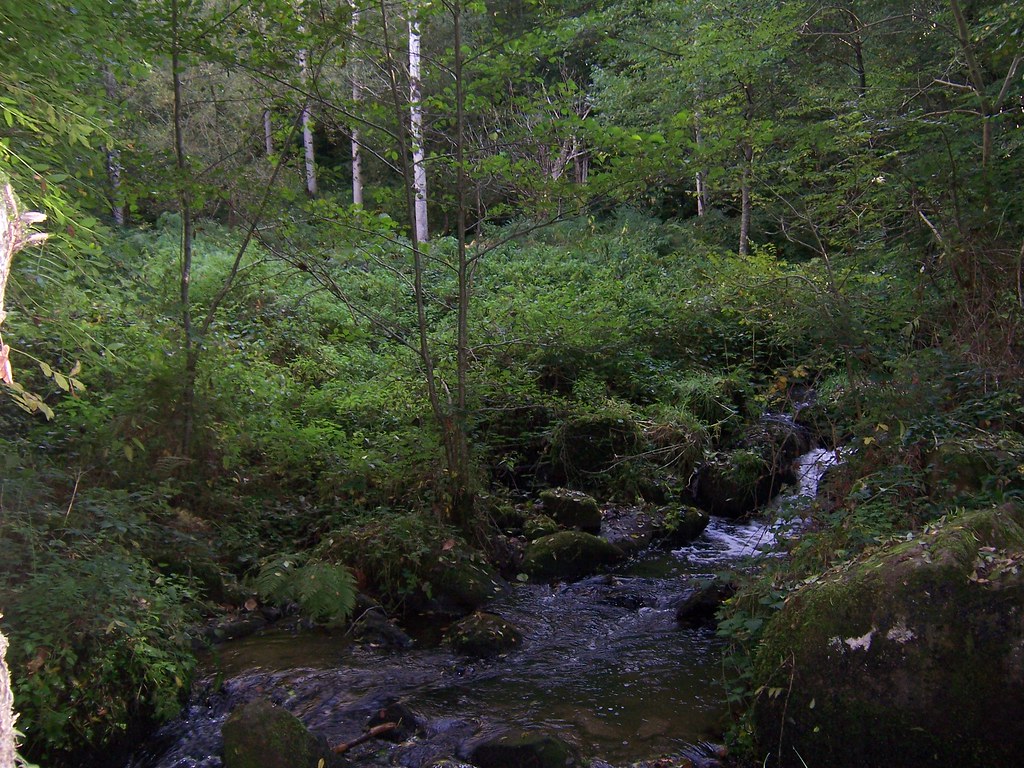
River Vire, Normandy: photo by tarheel traveler, 9 October 2010
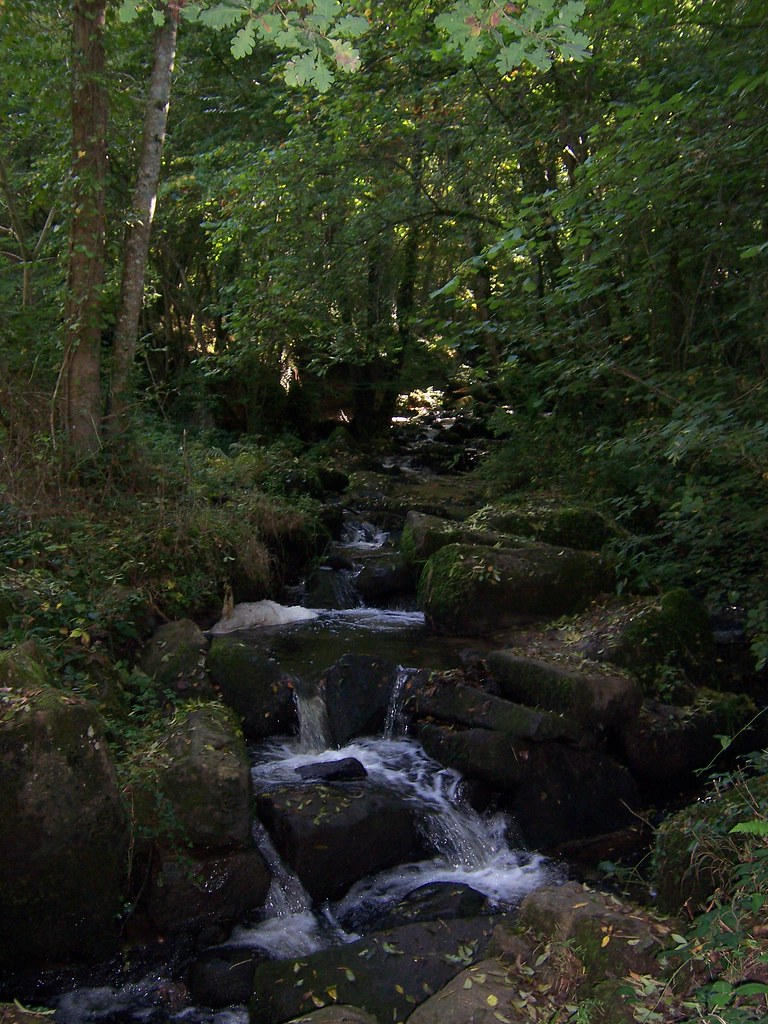
River Vire, Normandy: photo by tarheel traveler, 9 October 2010
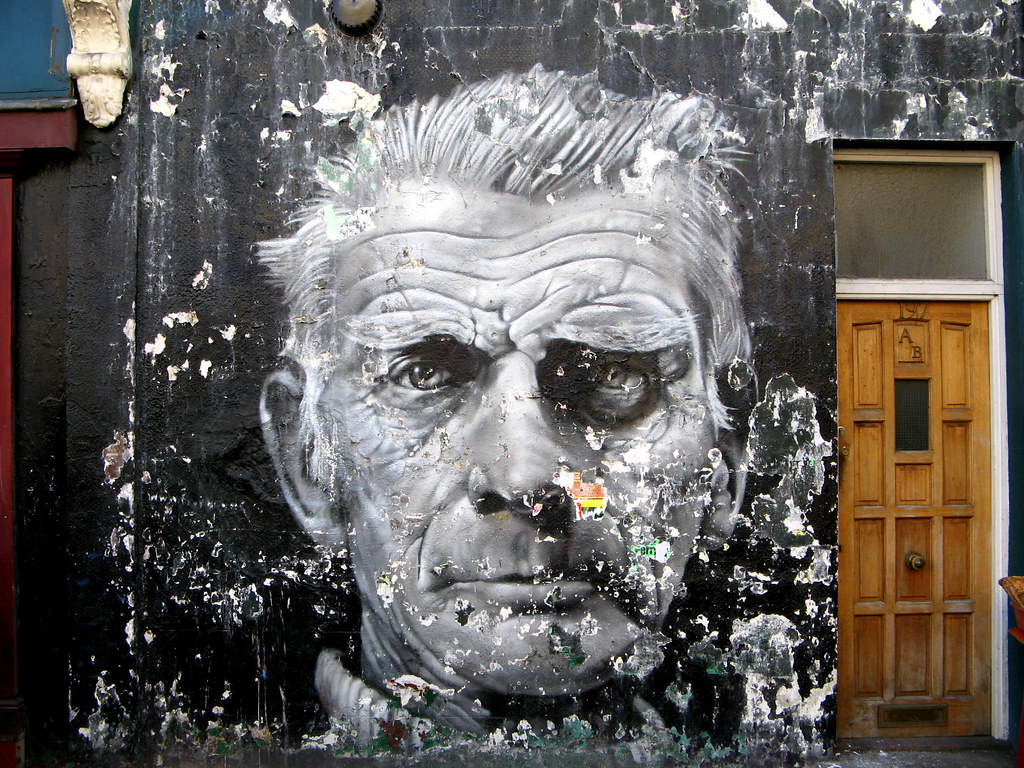
Samuel
Beckett mural by Alex Martinez (based on a 1976 photo by Jane Bown;
mural done April 2006; badly defaced 2008; replaced 2010), Blenheim
Crescent, off Portobello Road, Notting Hill, London: photo by Gonzalo San Martin (Speedy-G), 16 February 200


A historical parallel might be drawn between what happened at Saint-Lô in July 1944 and what happened at Ben Tre, Viet Nam, during the Tet offensive of 1968.
ReplyDelete"...the fighting in Ben Tre went badly for the Americans. House-to-house all the way. The VC were so well dug in and barricaded that progress got stalled. So, in desperation, artillery and air strikes were called in on the town. Much of the town was heavily damaged in the resulting melee, but the town was retaken.
"...Anyway, at one point the journalists were pressing Major Booris to explain why it had been necessary to wipe out the town. They were definitely pressing the point that perhaps too much force had been applied by the US forces. Major Booris was trying his best to put a good face on the situation. But at one point he got flustered, and blurted out, 'We had to destroy Ben Tre in order to save it.' I have to admit that I almost laughed when he said that. It was a really unfortunate comment."
-- from "About the famous quote of the Vietnamese 1968 Tet Offensive: 'We Had to Destroy Ben Tre In Order To Save It': Michael D. Miller, Former Captain, US Army Corps of Engineers, 46th Engineer Battalion, 159th Engineer Group, Commander, Task Force Builder, 1968 (25 October 2006)
“When we got there, there was nothing at all. The whole of Saint-Lô was blotted out.” Yet, once the killing was all done, it was called The Good War (though certainly not by those who died by the tens of millions in Europe and Asia, civilians caught up in the fury), as if wars could be ranked like bars of soap or breakfast cereals, on some twisted scale of satisfaction delivered. People deceive themselves so that they can deceive others.
ReplyDeleteFrom Wikipedia: "Much of the bombing from the first wave of aircraft fell across the town of Vire killing many of the inhabitants. It was a distressing night for many families."
ReplyDeleteWikipedia has a talent for understatement.
This post coupled with the last: from natural to moral evil as the theologians call it.
ReplyDeleteBeckett knew a fair bit about the war himself, living a fugitive existence following the betrayal of his resistance cell. All traces of easy illusion expunged here.
A few days back, Ed mentioned Fallujah and the invasion of Iraq as a contemporary example of mass killing. We employed the newest technology of death in the wars in Iraq. We learned how to kill and main not simply in the present tense, but well into the future—using so-called DU (depleted uranium) munitions that, by poisoning the landscape, continue to cause miscarriages and horrific birth defects in newborn children years after the battle of Fallujah and elsewhere, maybe for generations to come. This is a war crime, among the many war crimes committed by US forces. Soldiers who used and were exposed to these munitions suffered radiation poisoning, and in turn have poisoned their wives and lovers when they returned home to the US. The issue has been shunted aside in the news media.
ReplyDeleteReflecting upon these thoughtful comments, in light of the recent and probable future further downhill course of world (human) history, all one can say is that it seems likely that for many families there may well be many distressing nights ahead.
ReplyDeleteI pray to God almighty that those pilots and crew are forever in Hell.
ReplyDelete